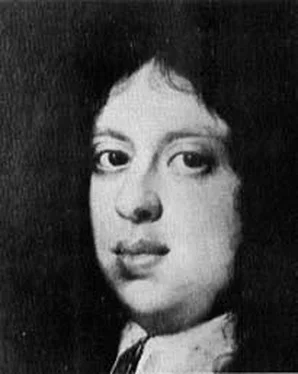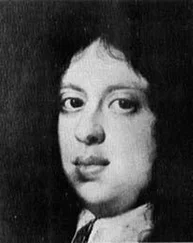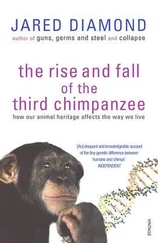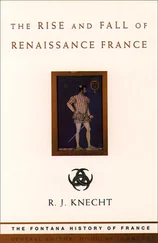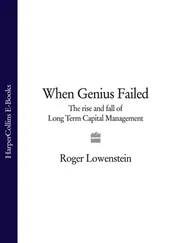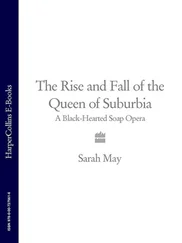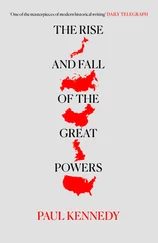Christopher Hibbert - The Rise and Fall of the House of Medici
Здесь есть возможность читать онлайн «Christopher Hibbert - The Rise and Fall of the House of Medici» весь текст электронной книги совершенно бесплатно (целиком полную версию без сокращений). В некоторых случаях можно слушать аудио, скачать через торрент в формате fb2 и присутствует краткое содержание. Жанр: История, на английском языке. Описание произведения, (предисловие) а так же отзывы посетителей доступны на портале библиотеки ЛибКат.
- Название:The Rise and Fall of the House of Medici
- Автор:
- Жанр:
- Год:неизвестен
- ISBN:нет данных
- Рейтинг книги:3 / 5. Голосов: 1
-
Избранное:Добавить в избранное
- Отзывы:
-
Ваша оценка:
- 60
- 1
- 2
- 3
- 4
- 5
The Rise and Fall of the House of Medici: краткое содержание, описание и аннотация
Предлагаем к чтению аннотацию, описание, краткое содержание или предисловие (зависит от того, что написал сам автор книги «The Rise and Fall of the House of Medici»). Если вы не нашли необходимую информацию о книге — напишите в комментариях, мы постараемся отыскать её.
picks up where Barbara Tuchman's Hibbert delves into the lives of the Medici family, whose legacy of increasing self-indulgence and sexual dalliance eventually led to its self-destruction. With twenty-four pages of black-and-white illustrations, this timeless saga is one of Quill's strongest-selling paperbacks.
The Rise and Fall of the House of Medici — читать онлайн бесплатно полную книгу (весь текст) целиком
Ниже представлен текст книги, разбитый по страницам. Система сохранения места последней прочитанной страницы, позволяет с удобством читать онлайн бесплатно книгу «The Rise and Fall of the House of Medici», без необходимости каждый раз заново искать на чём Вы остановились. Поставьте закладку, и сможете в любой момент перейти на страницу, на которой закончили чтение.
Интервал:
Закладка:
Some years before the Signoria , of which he was not at that time even a member, had described him as ‘ Capo delta Repubblica ’; now they passed a public decree conferring upon him the title Pater Patriae – a title once accorded to Cicero – and they ordered that the words should be inscribed upon his tomb.
They would have liked to have built a tomb at least as magnificent as that which his family had had made for Pope John XXIII in the Baptistery. But on his deathbed he had requested that he should be buried without ‘any pomp or demonstration’.
His father had made a similar request; but the request had been ignored. Giovanni di Bicci de’ Medici’s body had been carried to the church of San Lorenzo in an open coffin followed by his sons, accompanied by twenty-eight other Medici and a long procession of foreign ambassadors and Florentine officials, to be buried in the centre of the old sacristry in a tomb which was later to be far more extravagantly ornamented than he himself would have considered appropriate. 7Cosimo’s funeral was conducted rather more quietly yet it, too, was imposing enough. After a long and solemn ceremony in the basilica of San Lorenzo, which glittered with innumerable candles, his remains were interred below a marble memorial which was surmounted by a circle of serpentine and porphyry decorated with the Medici arms and placed at the foot of the altar. Since San Lorenzo is the basilica of St Ambrose and contains many martyrs’ relics beneath the altar, the Church’s rules did not allow the body to be buried in the nave immediately below the memorial. So it was placed in the vault; but, so as to join the tomb to the porphyry and serpentine memorial, a massive stone pillar, eight feet square, was placed between them. On this pillar are the words ‘Piero has placed this here to the memory of his father.’ 8
PART TWO
1464–1492
VIII
PIERO THE GOUTY
‘When it is a matter of acquiring worthy or strange objects he does not look at the price’
PIERO WAS forty-eight years old when he became head of the family. The perpetual ill health which had afflicted him since early manhood, and which had been responsible for his nickname, ‘ il Gottoso ’ (‘the Gouty’), had prevented him from taking as active a part in either the business of the bank or the affairs of Florence as would otherwise have been expected of the heir to the Medici fortune. He had, however, served as a Priore in 1448, had been Florentine ambassador in Milan, Venice and Paris, and in 14.61 had been elected Gonfaloniere , the last Medici ever to be elected to that office.
Despite the drooping eyelids which gave his face a rather sleepy appearance and the swollen glands in his neck, he was better looking than his brother Giovanni, while his determined chin and thin, set mouth suggested a character well able to withstand the almost constant pain he suffered from his arthritic joints as well as the irritation of eczema. Indeed, his nature displayed little of the edgy irritability so often associated with prolonged illness. He was considerate, patient and courteous. Though there were many who regretted a certain coldness in his manner and doubted his capacity to rule with his father’s authority, those who knew him well both liked and respected him.
As a banker he did not have his father’s flair, but he was scrupulously methodical. Characteristically he had noted in the most exact detail the amount expended on Cosimo’s funeral, the kinds of Masses that had been paid for, the amount of black cloth given to the women of the family for veils and kerchiefs, the sums of money given to servants and slaves for mourning clothes, the numbers of candles and weight of wax. This care for detail was combined with qualities that had made him an excellent diplomat. In France, in fact, King Louis XI had been so taken with him that, soon after he became head of the family, he was granted permission to decorate one of the balls of the Medici arms with three of the lilies of the House of Valois.
That most Florentines were prepared for the moment to accord to Piero the privileges and respect enjoyed by his father was due partly at least to the wife he had married and the five attractive, healthy children she had borne him. For Lucrezia Tomabuoni was a remarkable woman, charming and spirited, profoundly religious and highly accomplished. Her family, formerly Tornaquinci, had once been a noble one; but in order to evade the disadvantages attaching to their birth they had changed their name, altered their arms and abandoned their former pretensions. They were still rich; their palace in what is now one of the main streets in Florence was a splendid one; the delightful murals illustrating the lives of St John the Baptist and the Virgin by Domenico Bigordi Ghirlandaio in the choir of Santa Maria Novella – which display the astute and wary features of several members of the family – were paid for with Tornabuoni money. 1
Lucrezia herself was not content with patronage. She was a poèt of more than moderate ability. Since her interests were largely theological, most of her poems were hymns or translations into verse of Holy Writ. But they displayed a depth of feeling as well as a literary quality rarely to be found in such compositions. Neither her spiritual bent nor her intellectual leanings, however, prevented her from being an admirable wife and mother. Both her husband and her children, as well as her father-in-law, all seem to have adored her.
There were three daughters, Maria, Bianca and Lucrezia, known as Nannina. They were all to be married well, Maria to Leopetto Rossi, Bianca to Guglielmo de’ Pazzi, and Lucrezia to the scholarly Bernardo Rucellai. There were also two sons; Lorenzo, who was fifteen when his grandfather died, and Giuliano who was eleven. Both of them promised to be distinguished men.
Lorenzo, in particular, was precociously gifted. He did not share the good looks which – rare in the Medici – his father and younger brother both enjoyed. But his sallow, irregular features were powerful and arresting; and though his movements were jerky and ungainly, he was tall, strong and athletic. His education, thorough and wide-ranging, had been supervised at first by Gentile Becchi, the Latinist and diplomat, and later by Cristoforo Landino, translator of Aristotle and commentator on Dante, and Marsilio Ficino, his grandfather’s protégé and friend, whose allowance his father continued to pay. By the time Lorenzo was fifteen he was already being entrusted with responsibilities that most boys of his age would have found daunting. He was sent on diplomatic missions to Pisa to meet Federigo, the second son of King Ferrante of Naples; to Milan to represent his father at the marriage of King Ferrante’s elder son to Francesco Sforza’s daughter, Ippolita; to Bologna for conversations with its leading citizen, Giovanni Bentivoglio; to Venice to be received by the Doge; to Ferrara to stay with the Este family; to Naples to see King Ferrante. And in 1466 he went to Rome to congratulate the new Pope, Paul II, on his accession, to discuss the contract for the alum mines at Tolfa, and to try to make up for the neglect of business studies in his humanistic education by discussing the activities of the Roman branch of the bank with his uncle, Giovanni Tornabuoni, its manager. While in Rome he received a letter from his father which might well have been addressed to a diplomat of the most varied experience.
To the Medici’s supporters in Florence it seemed by then that Piero himself was in need of just as much help and advice as Lorenzo. Ever since Cosimo’s death the ambitious, ingratiating and plausible Luca Pitti had been endeavouring to achieve that power and influence in the city which seemed to him the just deserts of his talents. Piero he considered a wholly unworthy successor to the great Cosimo. So did the distinguished diplomat, Cosimo’s former friend and ambassador to France, Agnolo Acciaiuoli, who had been a persistent critic of the Medici during the last years of Cosimo’s life, maintaining that old age had reduced the father, as illness had reduced the son, ‘to such cowardice that they avoided anything that might cause them trouble or worry’. In their increasingly outspoken attack on the Medici, Luca Pitti and Agnolo Acciaiuoli had recently been joined by the Archbishop of Florence’s brother Diotisalvi Neroni, Florence’s first resident ambassador in Venice and later ambassador in Milan. Between them these three men constituted a formidable opposition to the Medici; and, as the weeks passed, Florence became divided into two opposing camps, the Party of the Hill, comprising the supporters of Luca Pitti – whose huge palace on the high ground of the Oltrarno beyond the Ponte Vecchio was now almost finished – and the Party of the Plain, those who remained faithful to the occupants of the Medici Palace on the lower ground in the Via Larga. The Party of the Hill gained much support from the merchant class when Piero, having ordered a survey of his business assets in order to discover ‘in how many feet of water he was standing’, was so concerned by the subsequent report that he ill-advisedly called in many long outstanding debts to the family bank which Cosimo had left undisturbed. The numerous bankruptcies which almost immediately followed were naturally blamed upon Piero, although he did his best to help several of those who had been hardest hit. It was not, however, until the Party of the Hill was joined by a more energetic and more determined opponent of the Medici that it appeared strong enough to drive Piero out of Florence as his father had been driven out some forty years before.
Читать дальшеИнтервал:
Закладка:
Похожие книги на «The Rise and Fall of the House of Medici»
Представляем Вашему вниманию похожие книги на «The Rise and Fall of the House of Medici» списком для выбора. Мы отобрали схожую по названию и смыслу литературу в надежде предоставить читателям больше вариантов отыскать новые, интересные, ещё непрочитанные произведения.
Обсуждение, отзывы о книге «The Rise and Fall of the House of Medici» и просто собственные мнения читателей. Оставьте ваши комментарии, напишите, что Вы думаете о произведении, его смысле или главных героях. Укажите что конкретно понравилось, а что нет, и почему Вы так считаете.
